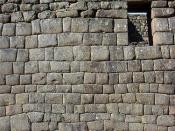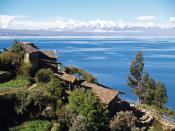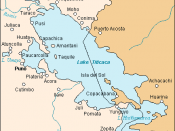It is interesting to think that I know very little about my personal historic folklore. These are things I should be concerned with, but do not seem particularly important to me. Sure, I know a lot about current "Net lore" and the like, but what has happened to stories that are passed down from one generation to the other. North Americans seem more concerned with current and future events, then with any significant historic legends. I chose to speak of a group that not only embraces their ancient folklore beliefs and legends, but they literally live it every day.
High in the Andes Mountains of Peru (over 12,500 feet) lies Lake Titicaca, the highest lake in the world, and second largest in South America. Not only is it the highest and the largest, but it has also been declared the Folklore capital of America, due to the large variety of its music and dances.
This is an indigenous community of some 350 families which continue to live within the traditions of the 14th century, according to the principles of Inca life. Here, without noting the passing of time, the three golden rules of the Empire of the Sun have been kept: Ama suwa, Ama quella, Ama llulla (do not steal, don't be idle, and do not lie). The contact with other civilizations has not been able to destroy the profound identity of the Inca way.
In Inka mythology, Manco Capac along with his sister Mama 0cllo, also known as the "children of the Sun", emerged from the depths of Lake Titicaca to found their Incan empire. They then proceeded to take over many tribes in the surrounding area. Between 1200 and 1535 AD, the Inca population lived in the part of South America extending from the Equator to the...


